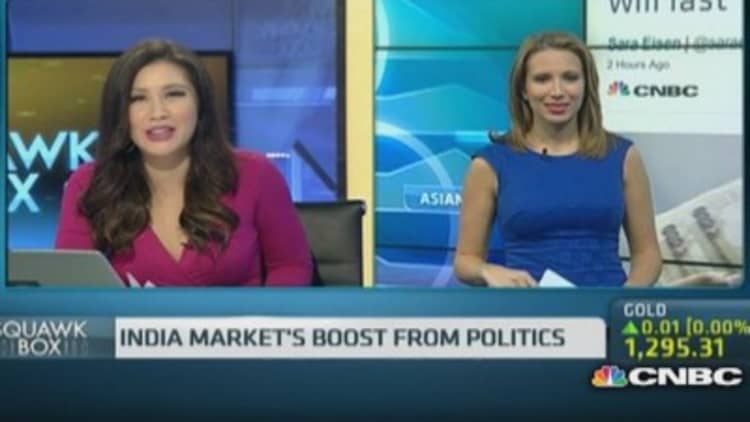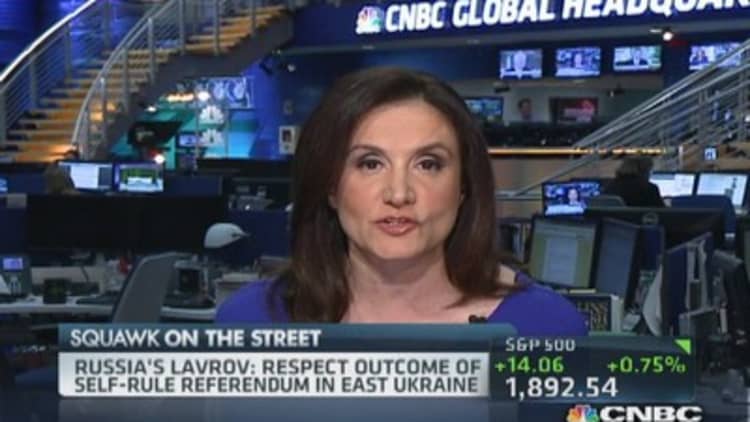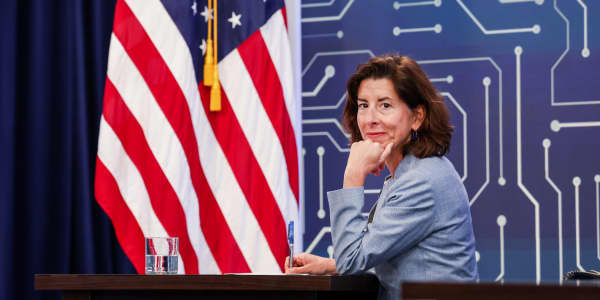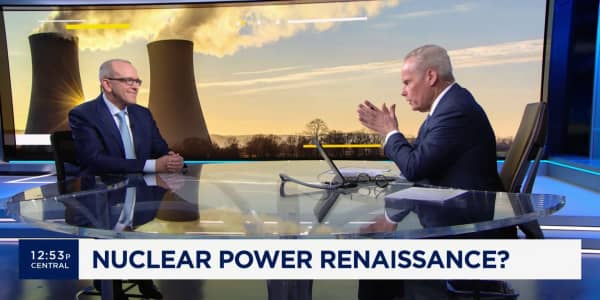
Guess which currency is having one of the best runs in 2014?
Here's a hint: Its economy finished out 2013 growing at the slowest rate in a decade—and faces the fastest inflation rate of all the emerging markets, around 8 percent.
Fears of the Federal Reserve scaling back its bond purchases sent the Indian rupee plunging to a record low late last year and had strategists predicting more declines this year on worries about sharp outflows from emerging markets.
Instead, the currency has strengthened nearly 4 percent in 2014, and more strategists have changed course and are jumping on the bullish bandwagon.
Barron's featured a bullish cover story last week, entitled, "India: Open for Business." The stock market is trading at a record high. And India's 10-year government bond yield is near a two-month high.
So what's driving the newfound optimism?
Political change is in the air.
The ongoing election—and hopes for new leadership—are a big part of the sentiment reversal.
Slower economic growth and increasing price pressures have hurt the popularity of ruling Prime Minister Manmohan Singh and his Congress party. Voting in India has been going on for weeks and will go through May 12, with results announced on May 16.
Read MoreCalls to scoop up emerging market assets get louder
So far, the opposition Bharatiya Janata Party is ahead, led by Narendra Modi, who is seen as pro-business and investment-friendly. He's been campaigning on growth, infrastructure building and closing the wealth gap between cities and rural regions.
Jens Nordvig, head of forex strategy at Nomura, said that should lead to currency strength.
"We generally want to trade from the long side, as we are constructive on the election outcome," Nordvig said. "In addition, sentiment on emerging markets has improved notably, and that is benefiting everything with carry, INR is in that group."
Investors are also confident in the leadership at India's central bank.
Raghuram Rajan, the former International Monetary Fund chief economist, swooped in last fall from University of Chicago with international and investor credibility to lead the Reserve Bank of India. Since then, he's been on a mission to fight inflation, raising interest rates 75 basis points to 8 percent.
Read MoreIndian elections: Modi seeks triumph in final round
Those higher rates have attracted foreign money in search of yield, especially at the same time Fed Chief Janet Yellen has signaled U.S. interest rates are set to remain super low for the foreseeable future, as the housing market loses momentum and economic growth disappeared in the first quarter.
In fact, lower Treasury yields and winter weather-fueled slower growth in the U.S. is keeping hot money flowing into India, as Treasury yields sit near the lowest levels since last fall.

It didn't exactly play out as feared. The consensus on Wall Street among the major strategists was that the Fed scaling back on its massive quantitative easing would trigger a crisis in places such as India, which suffered from weak fundamentals that had been masked for years by a flood of liquidity and hot money inflows thanks to QE.
One noted crisis expert, Carmen Reinhart of Harvard University told CNBC last August in Jackson Hole, Wyoming, "the probability of a banking crisis, currency crash and default all increase" for emerging markets after the capital flow bonanza ends.
But so far, the taper tantrum has been mild in 2014, and the hot money has continued to flow into India and the rupee.
That gets to the final point about India and emerging markets' currency strength this year: That is, expectations were pretty low, and the trade was looking crowded. Nobody liked emerging markets heading into the new year, with slower growth, higher inflation, rising deficits and the risk of tapering.
Read MoreHow housing weakness may change the Fed's game
Goldman Sachs told investors at the beginning of the year to cut allocations in emerging markets by a third for stocks, bonds and currencies over the next decade.
Those expectations and doom and gloom proved to be misguided, or at least exaggerated, because since then the Indian stock market, the Sensex, has risen to a record high.
Foreign institutional investors poured into Indian stocks during the first quarter, and the rupee strengthened.
So is it too late to buy?
Strategists say if Modi is indeed voted prime minister, that will open opportunities for investment in a traditionally tricky, bureaucratic economy for foreign direct investment. So the future for the rupee looks bright, unless fear of higher rates in U.S. grips markets again, or if the U.S. economy outperforms fast enough for the Fed to consider raising rates.
But for the moment, that doesn't look imminent.
Read MoreTime to get 'outright bullish' on emerging markets?
Kit Juckes, forex strategist at Societe Generale, sums it all up: "With political uncertainty set to go away after the elections, presumably, we'll get more inflows to finance the current account deficit…The global environment is EM-friendly and with central bank credibility in good shape the INR can ride a global risk-friendly wave."
—By CNBC's Sara Eisen.






